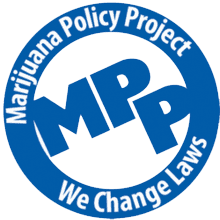Condition Report: Anorexia & Weight Control
August 26, 2019OVERVIEW
Cannabis’ current regulation in the United States, as well as around the world, limits the vast research needed to educate the public about its advantages. These findings sought to provide medical evidence of cannabis’ benefits and risks in cancer, respiratory disease, immunity, therapeutics effects, psychosocial, mental health, substance abuse, and others to the audience throughout 2018. Even though the evidence for cannabis usage is still elusive, the World Health Organization has urged for nations to remove cannabis from Schedule IV from its list of drug scheduling, which in turn will allow the protection for researchers and advocates interested in conducting additional studies to understand its benefits.
PREFACE
The consumption of cannabis and cannabinoids for medical purposes, as well as for recreational use, is still considered a controversial topic in the time of writing since limited research has not been able to provide a complete scope of results from studies to form any conclusive results about the benefits or risks of cannabis use.
Cannabis’ current regulation under Schedule I, from drug scheduling in the United States, limits the vast research needed to educate the public about its advantages. Needless to say, 34% of Americans support cannabis and its derived products to remain illegal, thus preventing further development and legalization (Hartig & Geiger, 2018).
In 2017, The National Academies of Sciences Engineering Medicine (NAS) published a lengthy report with evidence from several examinations conducted from 2011 through 2017. These findings sought to provide medical evidence of cannabis’ benefits and risks in cancer, respiratory disease, immunity, therapeutics effects, psychosocial, mental health, substance abuse, and others. However, due to the mentioned limitations, the National Academies’ report (2017) concluded that cannabis’ effects are still vague and recommend further investigation to provide more conclusive evidence.
This work of literature ought to be considered a complementary piece – extending the report’s findings – and provide the reader with an unbiased, comprehensive body of evidence regarding results from research and case studies throughout 2018, and the implications of much-needed analysis to benefit the consumer.
Even though the evidence for cannabis usage is still elusive, the World Health Organization has urged for nations to remove cannabis from Schedule IV from their list of drug scheduling, which in turn will allow the protection for researchers and advocates interested in conducting additional studies to understand its advantages (Angell, 2019).
Canneconomy.com and its affiliates aim to provide general information about cannabis consumption in the hopes for policymakers, users, researchers, and the general public to make an informed decision about cannabis and its derived products. Thus, seeking the research needed for a better understanding of marijuana as it takes on the medical field.
BACKGROUND
The cannabis policy landscape has undergone substantial changes over the past 40 years, including the legalization of cannabis for medical use in 28 states in the United States (NASEM, 2017). These policy changes have significantly changed patterns of cannabis use and perceived levels of risk.
Despite extensive interventions at the state level and the rapid increase in cannabis use for both medical and recreational purposes, conclusive evidence remains elusive about the short-and long-term health effects of cannabis use. Limited scientific research has resulted in a lack of understanding in cannabis use’s health implications, which is a significant public health concern. Thus, there is not an official guide to instruct consumers on the dosage and time of administration to use cannabis safely and effectively when treating medical conditions.
The Institute of Medicine (IMO) has published several consensuses reports on cannabis health effects and transformed the industry significantly with its published report titled Marijuana and Medicine: Assessing the Science Base in 1999. Since its publication, the scientific literature on cannabis use has grown substantially and led the National Academies of Sciences, Engineering, and Medicine to publish a lengthy report in 2017 with evidence from several examinations conducted from 2011 through 2017. These findings sought to provide medical evidence of cannabis’ benefits and risks in cancer, respiratory disease, immunity, therapeutics effects, psychosocial, mental health, substance abuse, and others. The report concluded that cannabis’ effects are still vague and recommend further investigation to provide more definitive evidence.
Simultaneously, marihuana is cataloged under Schedule IV of the Drug Convection Treaty of 1961 from the World Health Organization (WHO). However, recent discoveries presented to the WHO’s committee did not indicate that cannabis plant and cannabis resin were particularly liable to produce ill effects similar to other substances in Schedule IV. The Committee also recognized that cannabis preparations such as in the forms of oils and infused foods are chemically formulated in a way that they are not likely to be abused and there is no evidence of actual abuse to justify the current level of control associated with Schedule I in the United States. The organization concluded that the inclusion of cannabis and cannabis resin in Schedule IV is not consistent with the criteria for a drug to be placed in Schedule IV. Thus, the WHO has urged for cannabis and its key components to be rescheduled under international drug treaties. WHO’s petition aims for whole-plant marijuana, as well as cannabis resin, to be removed from the treaty’s Schedule IV (Adhanom, 2018).
If the proposal were to be adopted by nations’ members, it would confirm the belief that the world’s governing bodies have been wrong about cannabis’s risks and therapeutic benefits for years. More importantly, the international agreement would protect future research in the medical field and attempt to eradicate issues such as the opioid crisis, and others.
During this pivotal time, the author of this work embarked to research extensively for credible databases including PubMed, Science Direct, Elsevier, JSTOR, and others to conduct a systematic review of the findings throughout 2018 that expand the National Academies’ report since 2017 and provide the audience with facts of current medical evidence to outline the benefits and risks of cannabis use.
THERAPEUTIC FINDINGS: ANOREXIA & WEIGHT CONTROL
Many acute and chronic diseases such as congestive cardiac failure, chronic obstructive lung disease, chronic kidney disease, sepsis, and malignancy can affect patients’ appetite and weight and lead to cachexia (wasting of the body) (Nall, 2018). In determining disease-related appetite loss, prevention of further weight loss or facilitation of weight growth is an important but overlooked objective. The cannabinoid receptors (CB), specifically CB1, encourage appetite, and associate food reward (Barrons, 2018). However, it is essential to remember that marijuana has a different effect on any patient with an eating disorder.
The first study to evaluate the use of cannabidiol drugs during hospitalization was conducted in Texas (Howard, Hossaini, Tolar, and Gaviola, 2018). The retrospective cohort study focused on dronabinol, megestrol, or mirtazapine for the appetite of hospitalized patients, which results include documented appetite improvements, and weight changes. Howard et al. discuss that compared to appetite-stimulating drugs, nearly half of the patients (48%, n=38) experienced dietary improvements after the cannabis-related medication began. More so, there is no difference between dronabinol, megestrol or mirtazapine in changes in meal intake or weight in the patients, but numerical improvements in meal intake may occur (Howard et al., 2018).
On the other hand, Rossi, Rosario, Angiozeano and Miraglia (2018) researched CB that regulate thermogenesis, food intake, and inflammation relating to obesity. In their study, Rossi et al. found that CB1 inhibition helps reducing body weight and food intake, whereas the stimulation of CB2 limits inflammation and promotes anti-obesity effects by reducing food intake and weight gain. CB receptors are also responsible for transforming white adipose tissue towards beige or brown adipocytes; therefore, their modulation can be considered a potential anti-obesity target. However, because of CB1 principal localization in the central nervous system, it represents a vital research limit, and researchers conclude that CB2 stimulation could be a possible solution with a higher safety profile (Rossi et al., 2018).







